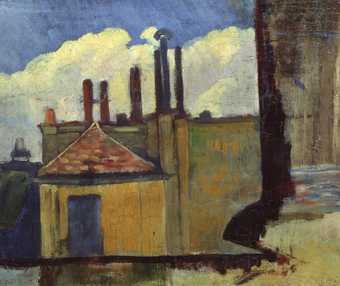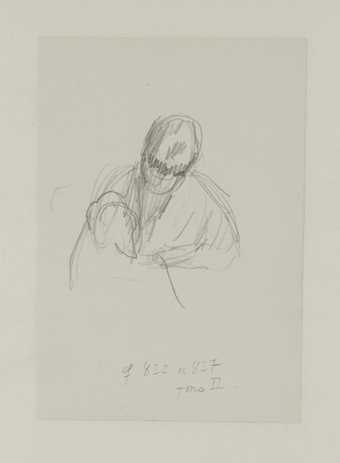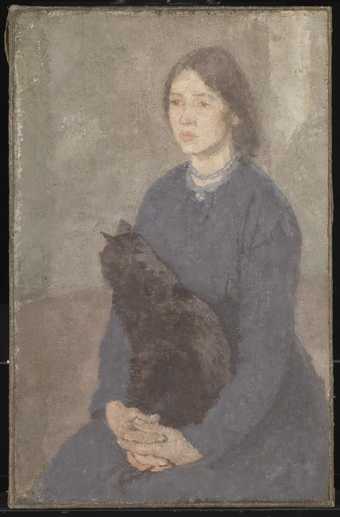
Pierre Bonnard Stairs in the Artist's Garden 1942-4 National Gallery of Art (Washington, USA)
1) Bonnard is known for his use of colour
Bonnard liked intense colours. He combined them in his paintings in a completely individual way that gives them great intensity.
He could give the sense of bright sunlight outside, as well as artificial light indoors. Colour floods his late works, almost overwhelming the subjects of his paintings.

Pierre Bonnard
The Bowl of Milk
(c.1919)
Tate
2) He was part of Les Nabis
Bonnard was a member of Les Nabis, a group of artists working at that time. They included artists such as Edouard Vuillard and Paul Serusier.
Nabis comes from the Hebrew word for prophet. These painters saw themselves as prophets of modern art. They favoured a bold, but simplified style of painting.
Les Nabis used flat patches of colour, and admired Japanese prints and the work of Paul Gauguin. Gauguin was known for experimenting with colour. Bonnard worked in the years following Gauguin's death in 1903 and was directly influenced by his style.
3) He liked painting domestic scenes
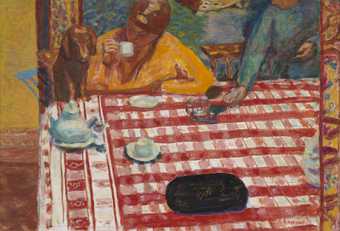
Pierre Bonnard
Coffee
(1915)
Tate
Bonnard was known in his earliest years as an Intimist. He had a fondness for domestic interiors that expressed the unusual aspects of everyday life.
These paintings show friends and family in familiar surroundings. Coffee, for example, shows a woman sipping from a cup, accompanied by a dog and a second figure, moving in or out of the scene. It feels like a snapshot of a fleeting moment.
4) He is famous for his nudes
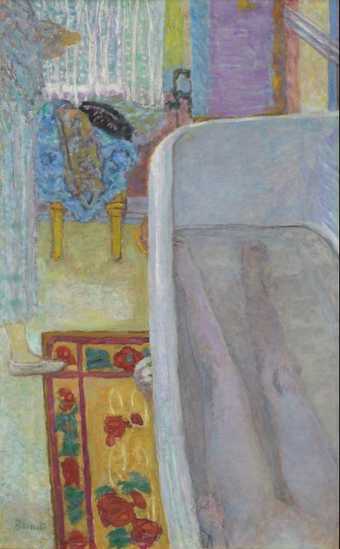
Pierre Bonnard
Nude in the Bath
(1925)
Tate
Bonnard painted many nudes, mainly of his companion and wife Marthe de Méligny. She is often depicted washing or drying herself or, in a few paintings, lying in the bath so that her floating body is magnified by the water.
De Méligny bathed every day in order to treat her tubercular condition. These intimate views were part of their daily life together. These works show de Méligny from Bonnard’s male gaze.
5) He painted from memory
Bonnard rarely painted from life. He would sketch his subject and then begin the painting in the studio. This allowed Bonnard to concentrate on the point of inspiration.
Working in this way added a new complexity to the paintings. We can wonder how these autobiographical moments may have been transformed through recollection.
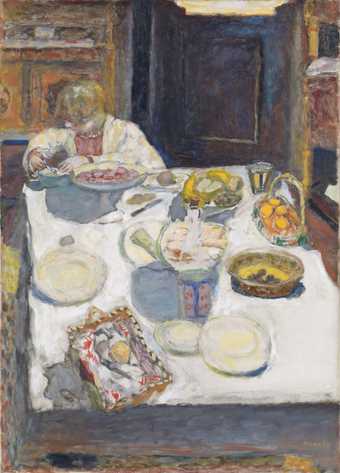
Pierre Bonnard
The Table
(1925)
Tate

Pierre Bonnard
The Window
(1925)
Tate
6) He liked to work on many paintings at the same time

Pierre Bonnard
Pont de la Concorde
(1913–15)
Tate
Bonnard would fill his studio with canvases that were tacked to the walls.
He worked on different subjects side by side, including works inspired by his garden, his daily walks or his experience of crowds in the streets.
He would paint directly on rolls of canvas and then cut them once the painting was completed. Some would take months, even years, to resolve.
7) It's hard to think of Pierre, without Marthe
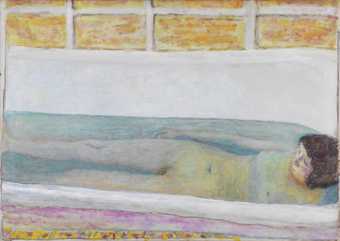
Pierre Bonnard
The Bath
(1925)
Tate
Marthe de Méligny appears throughout Bonnard’s work. It is almost impossible to imagine his paintings without her. They remained together for fifty years, despite Bonnard having numerous affairs with younger women.
De Méligny had her own secrets though. She was 24 and he was 26 when they met in 1893, but she claimed to be much younger and was working under her assumed name. She only revealed her real name, Maria Boursin, when they married in 1925. She remained the central figure in Bonnard’s life until her death in 1942.
8) Matisse loved his work. Picasso disliked it.
Bonnard's paintings divided his two contemporaries. Picasso privately expressed frustration at Bonnard’s constant need to revise, saying: ‘Painting … is a matter of seizing the power’. Matisse, however, appreciated ‘the full depth of his expression’ and called Bonnard ‘one of the greatest painters.’ Bonnard could and still does split opinion.

